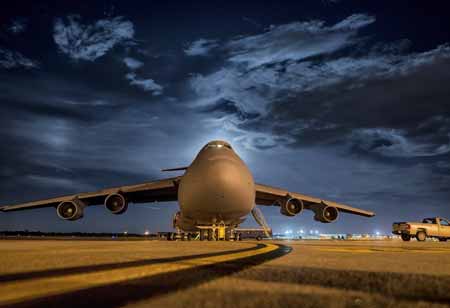THANK YOU FOR SUBSCRIBING
THANK YOU FOR SUBSCRIBING

By
Logistics Transportation Review | Friday, November 24, 2023
Stay ahead of the industry with exclusive feature stories on the top companies, expert insights and the latest news delivered straight to your inbox. Subscribe today.
European airports have implemented advanced technologies and hygiene protocols to ensure passenger safety during the pandemic, collaborating with airlines, health authorities, and industry experts.
FREMONT, CA: The safety and well-being of passengers have always been a top priority for airports worldwide, especially in the wake of the COVID-19 pandemic. European airports, in particular, have implemented a plethora of measures to ensure the safety and confidence of travellers passing through their terminals. These initiatives span from stringent hygiene protocols to innovative technologies aimed at minimising health risks and enhancing overall safety.
Stringent Hygiene Protocols
Maintaining a clean and sanitised environment is paramount for European airports. Enhanced cleaning procedures have been implemented extensively, focusing on high-touch areas such as check-in counters, security checkpoints, lounges, and boarding gates. The use of hospital-grade disinfectants, frequent sanitisation of surfaces, and the installation of hand sanitiser stations throughout terminals are common practices.
Passengers are encouraged to maintain personal hygiene standards, including wearing face masks, using hand sanitisers, and practising social distancing. Signage and announcements reminding travellers to follow these guidelines are prominently displayed to ensure compliance.
Advanced Technological Solutions
European airports have leveraged technology to minimize physical contact and streamline processes. Contactless check-in and baggage drop-off systems, self-service kiosks, and mobile boarding passes have become more prevalent, reducing the need for face-to-face interactions and minimising queues.
Furthermore, many airports have invested in advanced air filtration systems to improve indoor air quality. These systems use high-efficiency particulate air (HEPA) filters and advanced ventilation techniques to circulate and purify air, reducing the risk of airborne transmission of viruses and bacteria.
Health Screening and Testing Facilities
To curb the spread of infectious diseases, several European airports have established on-site health screening and testing facilities. Some airports offer COVID-19 testing services, including rapid antigen tests or PCR tests, providing convenient access for travellers who require proof of a negative test result for their destination or connecting flights.
Moreover, thermal scanners and temperature checks are deployed at various points within the terminal to identify individuals with elevated temperatures, a potential symptom of illness.
Embracing Digitalisation for Contactless Travel
The acceleration of digitalisation has been a driving force in creating touchless and seamless travel experiences. Mobile apps and digital platforms enable passengers to access real-time information regarding their flights, gate changes, and security wait times. Pre-booking services for amenities like parking, lounges, and retail outlets are also encouraged, reducing physical interactions and wait times.
Collaboration and Adaptation
European airports have collaborated closely with airlines, health authorities, and industry experts to adapt swiftly to changing circumstances. Continuous monitoring of guidelines from health organisations and governments has led to prompt adjustments in protocols to ensure alignment with the latest safety recommendations.
The efforts undertaken by European airports to prioritise passenger safety reflect a commitment to providing a secure and comfortable travel experience. The integration of stringent hygiene practices, technological innovations, health screenings, and digital advancements demonstrates a proactive approach toward mitigating health risks and instilling confidence among travellers.
As the landscape of travel evolves, European airports will continue to adapt and implement measures to meet the ever-changing needs and expectations of passengers, fostering a safe and resilient air travel environment for all.
I agree We use cookies on this website to enhance your user experience. By clicking any link on this page you are giving your consent for us to set cookies. More info





